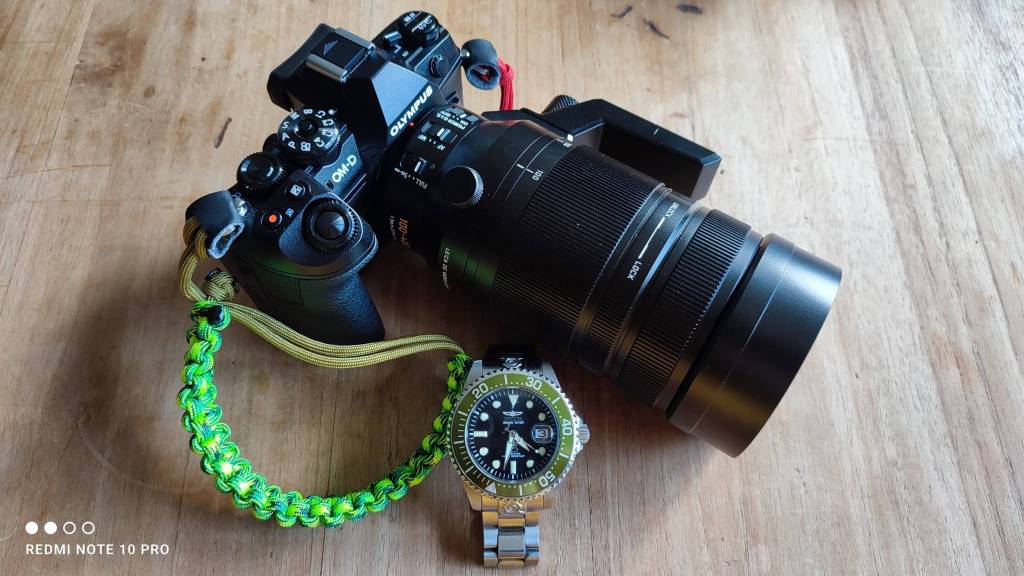
I did my first experiments with Olympus and bird photography, with an E-M5 Mark II and Panasonic Lumix G Vario 100-300mm f/4-5.6 II POWER O.I.S. At that time I was still a Fujifilm user, and compared this lens next to my Fuji X-H1 and Fujifilm XF 70-300mm f/4-5.6 R LM OIS WR. The Fuji was the better camera, but also a lot heavier and a lot bigger than the M4/3 combination, not to mention the difference in angle of view – Fuji 450mm and Olympus/Pana 600mm !
Then I bought an E-M1 Mark II second-hand. That camera had to be the deciding factor if I was considering to move from Fujifilm to Olympus.
For bird photography I wanted a lens that could outperform any Fujifilm combination without being bigger or heavier.
For the comparison I only had the XF 70-300 with 1.4 TC, but for the size and weight I also took the Fuji XF100-400mm specs.
Short time later, I came across a second-hand Panasonic Leica DG Vario-Elmar 100-400mm f/4-6.3 Asph. Power OIS on eBay for a bargain price. The lens was completely intact and in near mint condition. If this wasn’t a lens that could be decisive what would ? so I bought it, I could still sell the whole combination if I would stick with Fujifilm.
A rough comparison:
X-H1 with XF 70-300mm and TC1.4 – closed lens length 150mm, weight 1380gr – 35mm max focal length 630mm
E-M1 MKII with Pana 100-400mm – closed lens length 170mm, weight 1550gr – 35mm max focal length 800mm
X-H1 with XF 100-400mm – closed lens length 210mm, weight 2050gr.- 35mm max focal length 600mm
The Fuji XF 70-300mm combination with TC does slightly better in weight, less in length (because the camera is much bigger) but gets outperformed by the Oly/Pana combination in terms of max. focal length.
The Fuji XF 100-400mm weighs 500gr more and is surpassed even more in terms of focal length.
Even the new Fuji XF 150-600, which can make up for the best focal length, is a lot bigger and that combination weighs 1000gr more, not to mention the price of this one.
So I think I can safely say that the E-M1 MKII together with the Panasonic Leica 100-400mm is a light and compact combination for nature and wildlife photography that can be found for an affordable price, and that was what I was looking for .
Long story short, Fujifilm went out the door and I bought myself a brand new Olympus E-M1 Mark III as a first camera, and the nearly equivalent Mark II became my backup.
But now for the lens, is it good and how does it perform on the E-M1 Mark II or Mark III ?
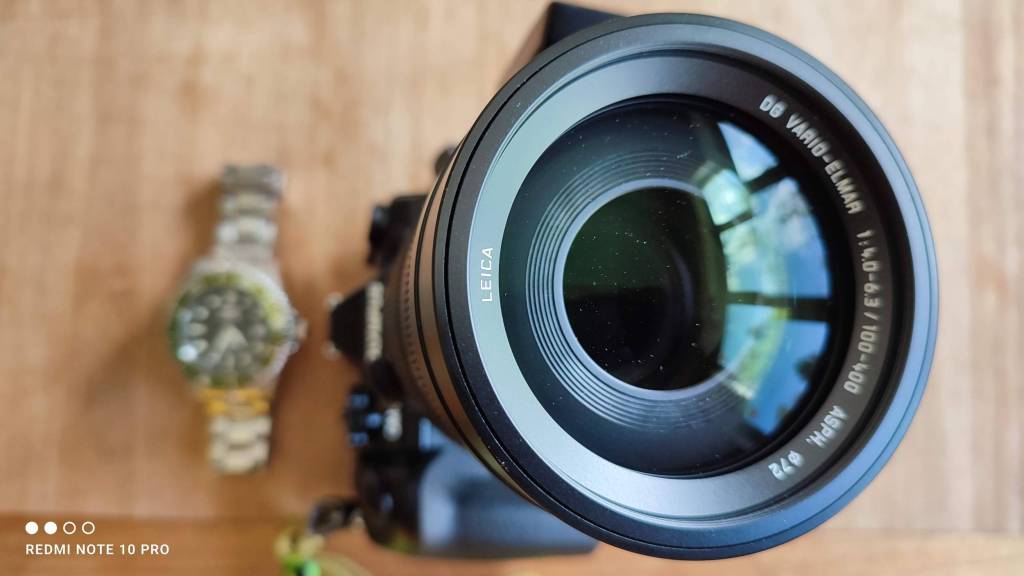
First the image stabilization settings,
we have a Panasonic lens on an Olympus body,
and while this works perfectly, there are still a few things to keep in mind that will determine whether you will use the Lens OIS or the built-in IBIS.
With a lens of this size I would recommend using the OIS of the lens, with smaller focal lengths you can switch to IBIS.
On your camera : Lens IS Priority = ON
On your camera: IBIS = ON
Now you can switch as desired on the lens:
Lens OIS switch ON = OIS
Lens OIS switch OFF = IBIS
For other possible settings you should have a look on this site – click here or on the picture
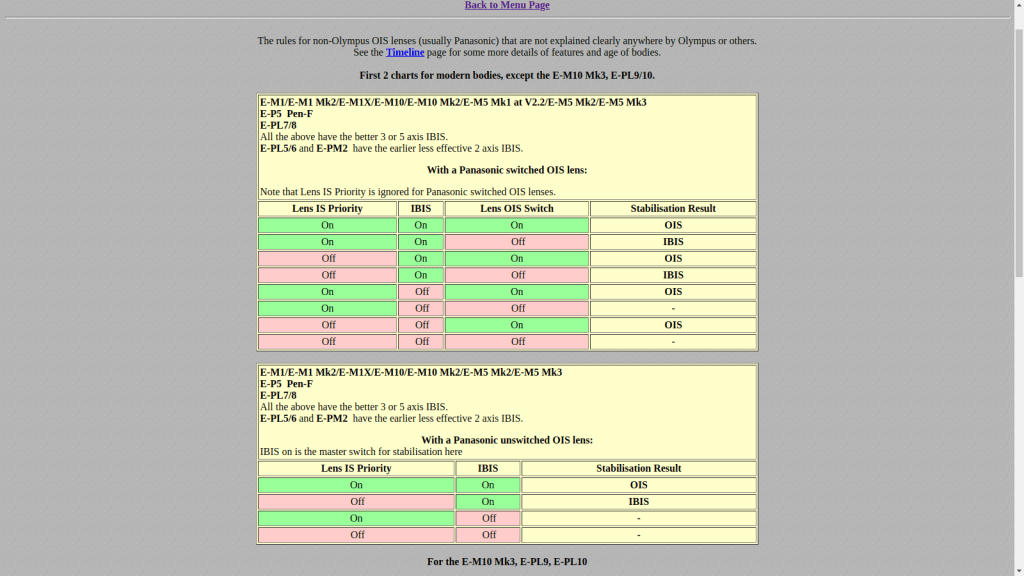
Another thing I also encountered while shooting is the manual/AF clutch on the lens,
If you don’t intend to focus manually, it’s better to turn it off in your camera’s menu, so you don’t run the risk of accidentally activating the clutch and suddenly having no AF.
The control buttons on the lens can also unintentionally change position during use, so you may be without OIS, or your close/far setting has suddenly changed, these are things to watch out for!
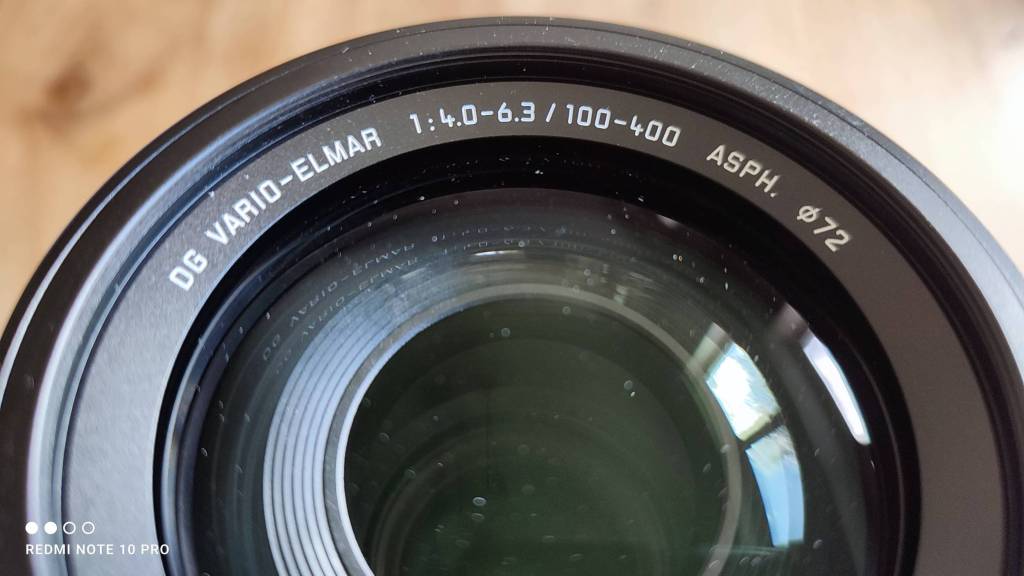
Is she sharp, well this is always a point for discussion,
what is sharp for one is not for another, and so with every lens you have photographers who love it and others don’t.
Not everyone has the same requirements, that’s point one.
The second point is: how far do you want to go – in weight, in size, in price?
Because, for example, the Nikon 600 mm f/4E FL ED VR is sharper. However, if you walk down the street with the Nikon, you risk getting shot because they think you’re a terrorist with a bazooka, thats how big it is !
It’s also expensive and costs almost €15,000 – a camera combo weighs 5kg – and together with a Nikon camera is about 500mm long – lens hood not included – but it is sharper!
Below some completely unedited test shots, left normal view, right some 100% or 200% crops, some normal pictures and some with info below – all wide open ( f6.3 ) and handshot – click on the pictures to enlarge !
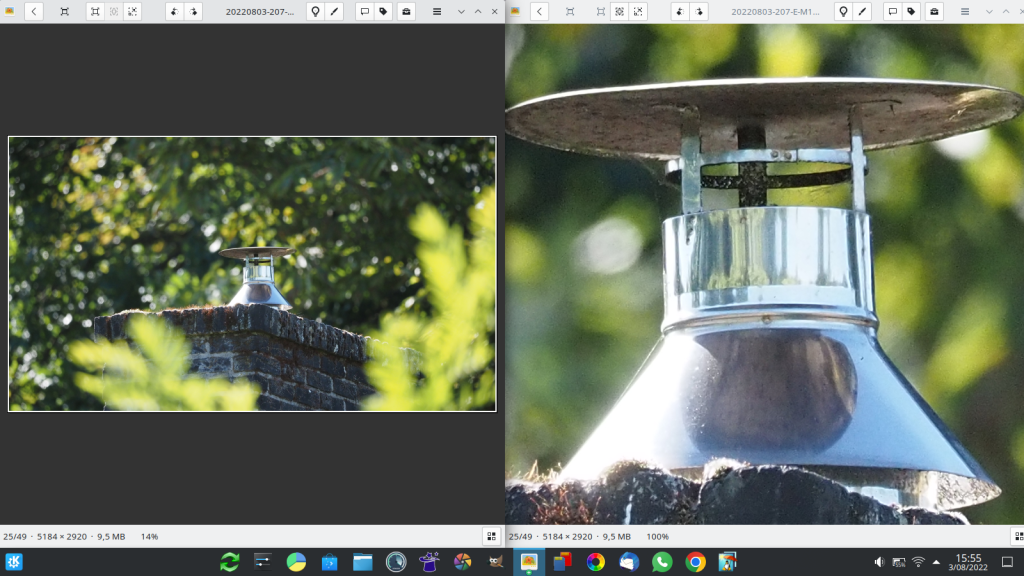
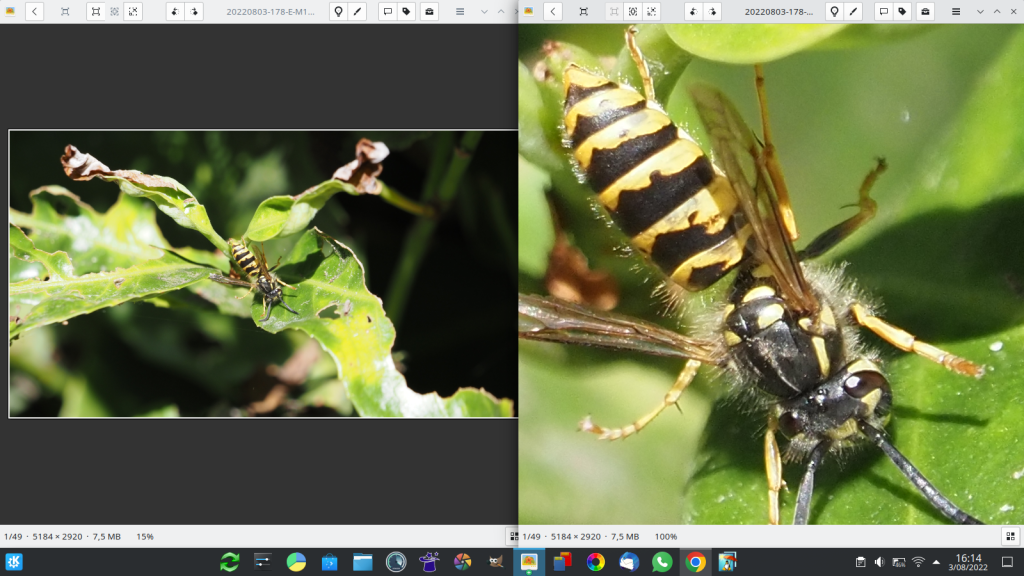
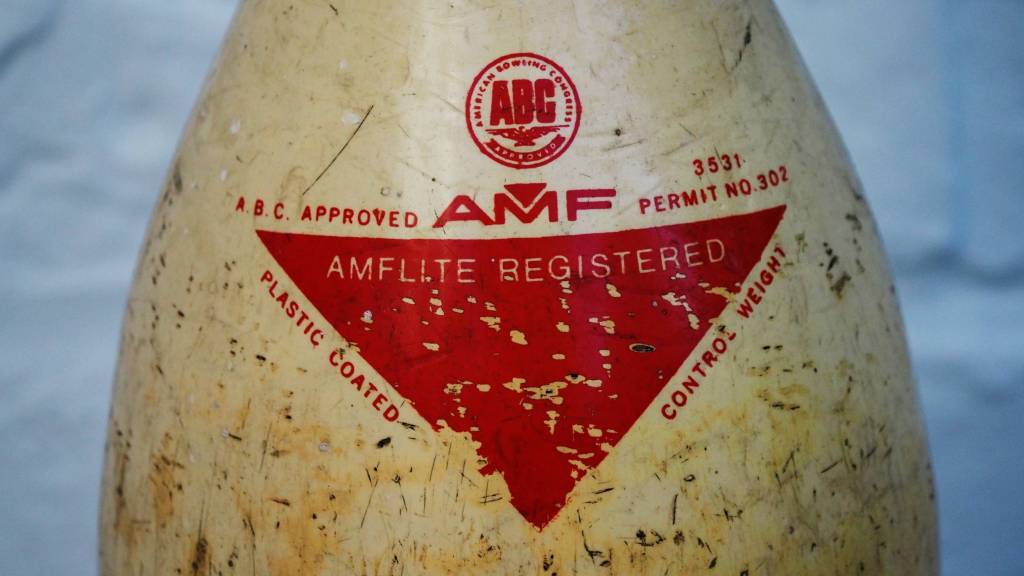
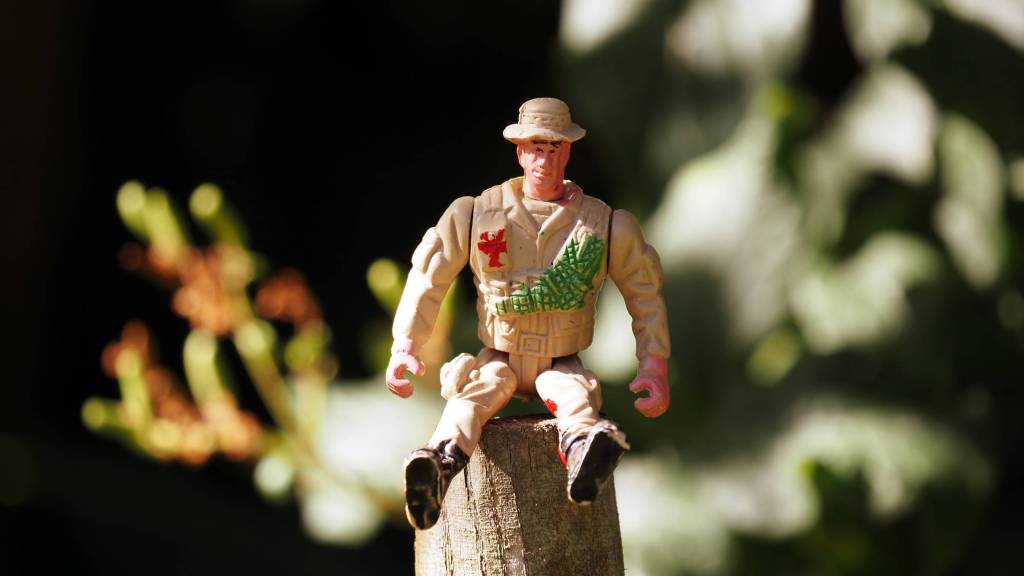
Here some edits in Rawtherapee of two photos that were a little overexposed. I just want to indicate that Olympus Raw files (orf) can also be developed in Rawtherapee and on a Linux computer, and I think they look very well :
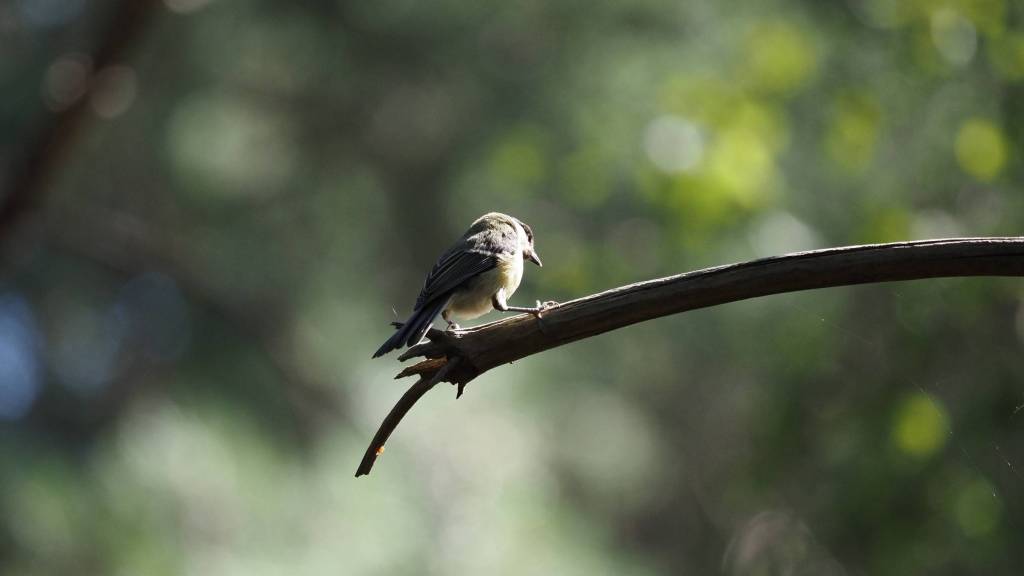
Unedited SOOC Jpg – Olympus E-M1 Mark III – Lens at 400mm and wide open at f6.3 – ISO 1250 – 1/500e – OIS lens stabilisation – Bird according to lens data at a distance of 10.97 m
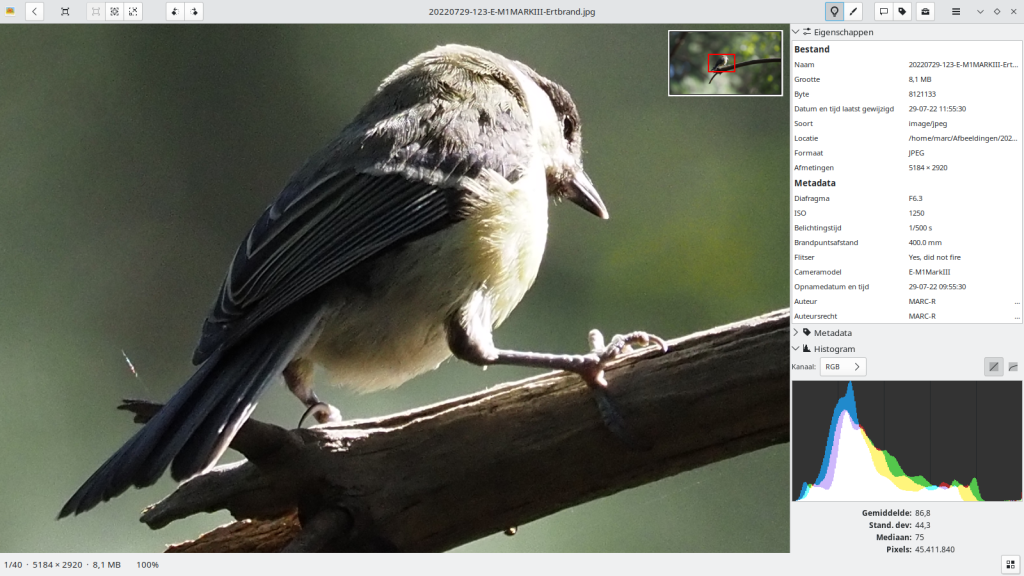
Unedited zoom in, in gThumb – SOOC Jpeg
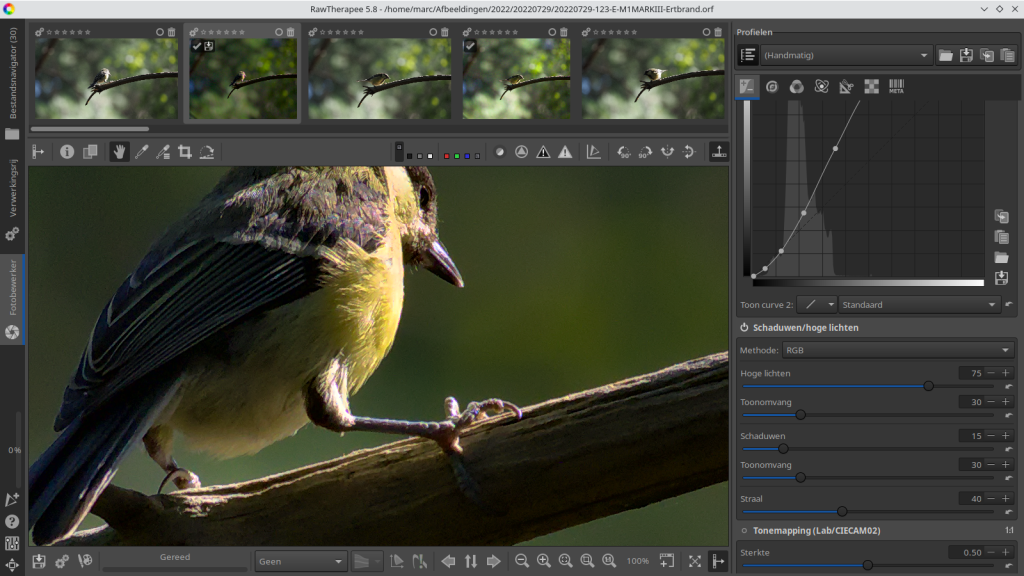
Basic edit from Raw in RawTherapee 5.8 – contrast, high lights recup., color etc.
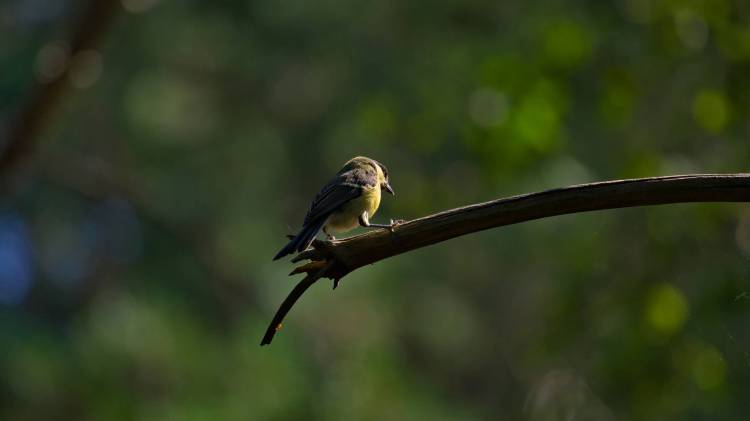
Edited RawTherapee Jpg Output
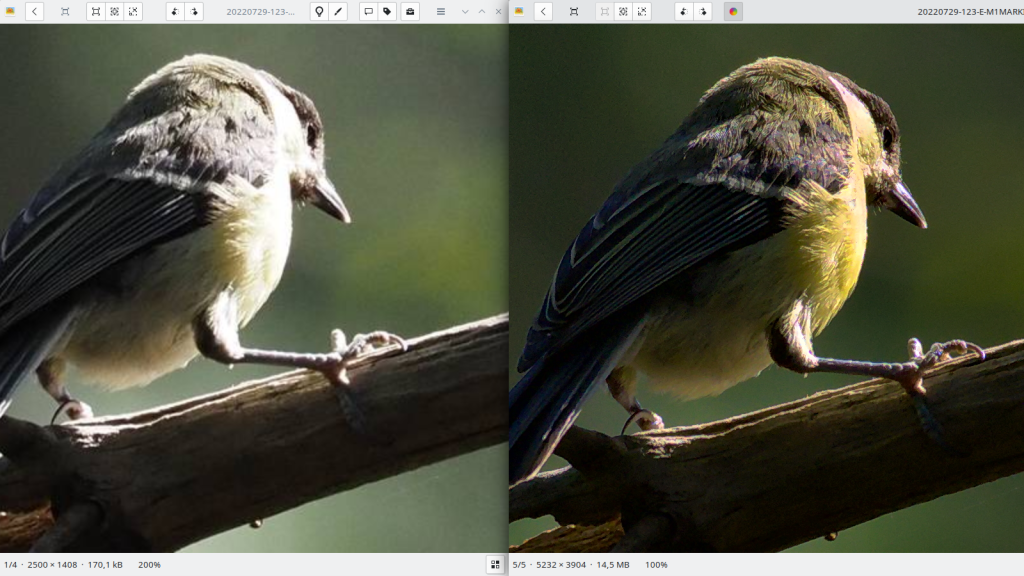
Zoomed and side by side in gThumb
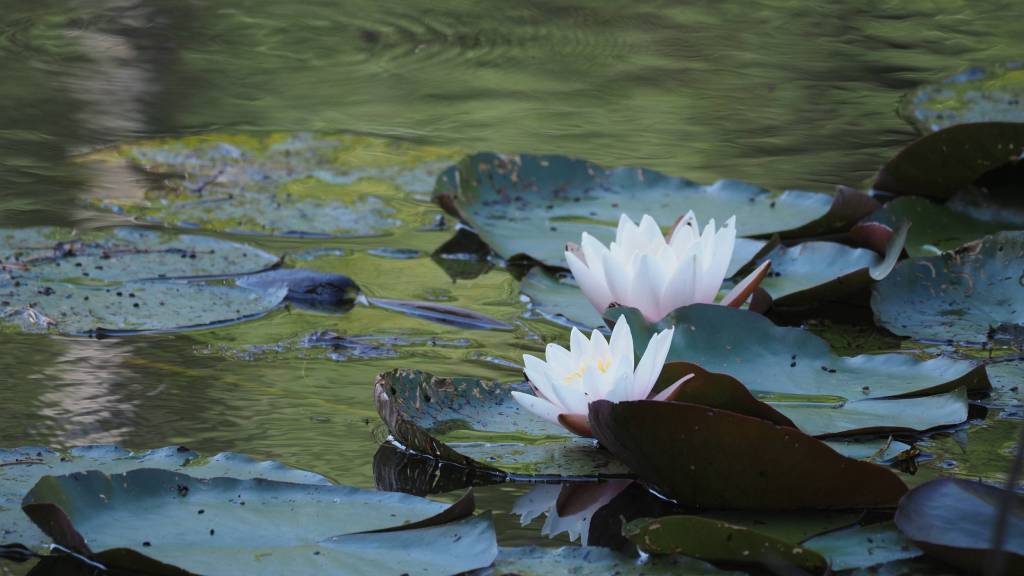
Unedited SOOC – Olympus E-M1 Mark III – Lens at 400mm and wide open at f6.3 – ISO 250 – 1/125e – OIS lens stabilisation – Water lilies according to lens data at a distance of 13.89 m
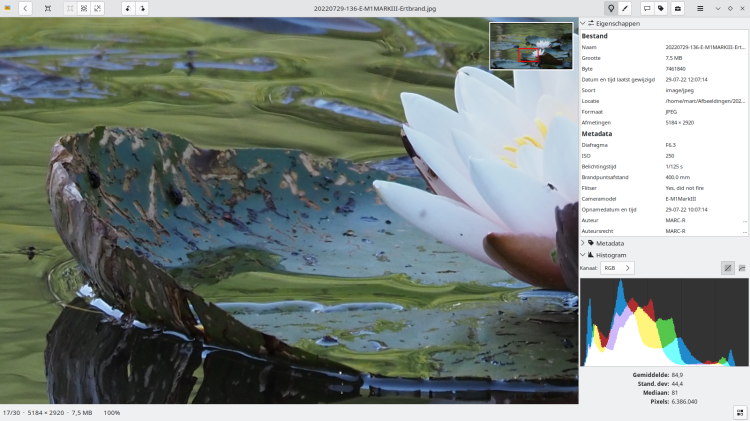
Unedited zoom in, in gThumb – SOOC Jpeg
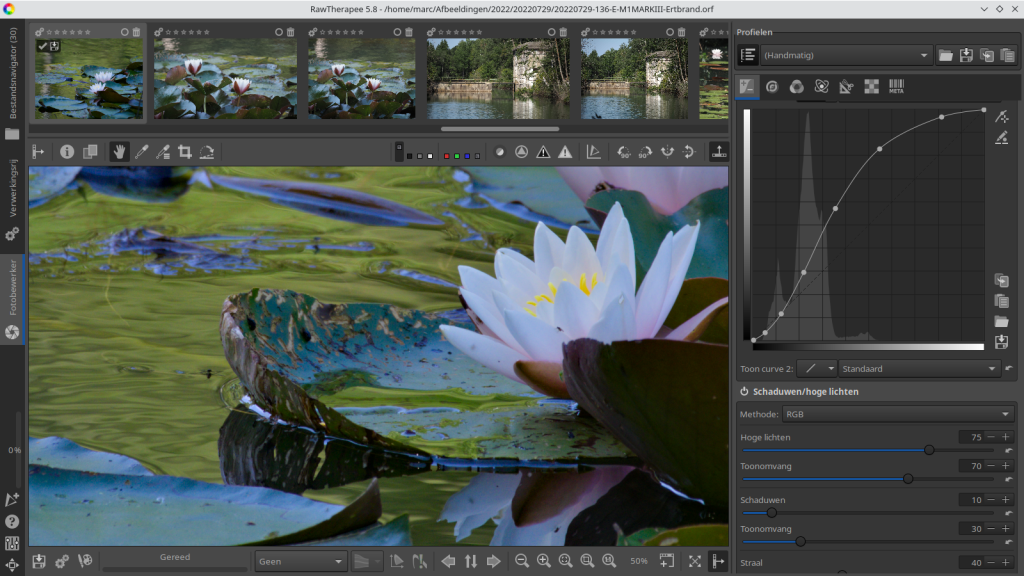
Basic Edit in RawTherapee 5.8
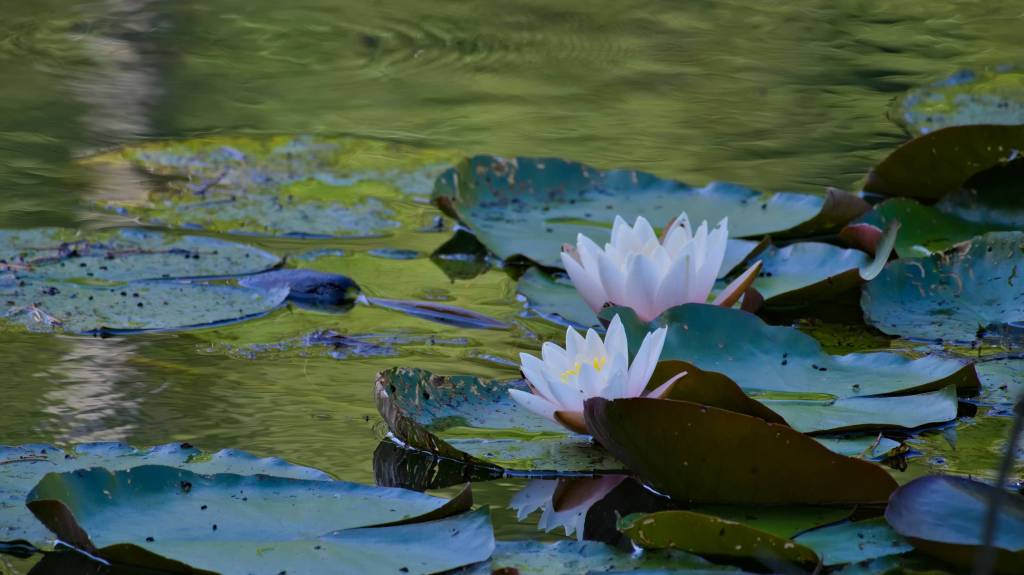
Final RawTherapee Jpg Output
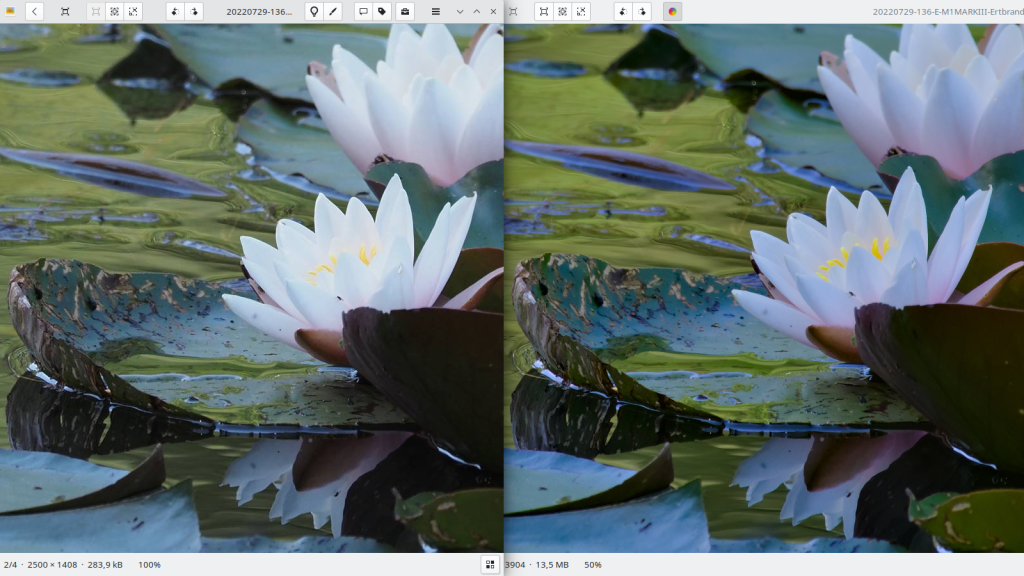
Zoomed and side by side in gThumb
Maybe not many pictures for a review, but more pictures taken with this lens can be found in my gallery, search for Panasonic 100-400mm.
My Conclusion :
My starting point has always been – can I make a camera/lens combination with Olympus that is somewhat comparable to an X-H1,
with a lens that has a longer range than the Fuji XF 100-400mm,
and which is a more compact and lighter setup.
The answer to that was not only yes, but the Olympus combination is better.
Both the E-M1 MKII and MKIII are tough and weather sealed cameras.
The image stabilization on the Olympus cameras is extremely good, much better than the Fuji.
And you have tools like Live Composition and Pro Capture.
The Panasonic Leica DG Vario-Elmar 100-400mm F4.0-6.3 Asph. Power OIS has a longer range – in 35mm comparison Fuji 600mm, Olympus 800mm.
The weight is 500 grams lower, and the combination is also smaller.
The lens is sharp, or sufficiently sharp up to my standards.
The lens is fast enough in terms of AF.
Q&A:
- Would I recommend this lens for bird photography, or wildlife in general?
Yes - Is the Olympus version of the 100-400mm better?
I can’t answer that, reviews found here and there on the internet indicate that the results are comparable – However, the Olympus lens can be equipped with a teleconverter for even more range, and you will get even better stabilization results. - Is the Olympus 300mm f4.0 Pro a better choice?
again, I can’t answer that because I don’t own it – However, ditto on the internet you will find plenty of reviews. The lens is said to be the sharpest in the Olympus range, that being said, how much sharper? the price is in any case substantially higher, you can buy two 100-400mm lenses for this one.
There are also other things to keep in mind, as it is a prime lens, you can’t zoom in or out, and a 300mm (600mm) lens is only just enough range that you would like to have for bird photography, its not the smallest, its not the lightest … and its expensive !
Finally I would like to say this, if Olympus and with it the micro 4/3 system is so good,
why does everyone shoot with Nikon, Canon, Fuji, Sony … ?
Well, usually when someone is going to buy a camera, he or she buys what is known good to him or her.
Maybe mom or dad also had a Nikon or other…
Maybe it’s from looking up commercials, specs, or on the recommendation of an expert in the camera shop.
Influencing can be done in many ways.
In Dutch we have an expression “onbekend is onbemind”,
simply translated “unknown is unloved”
and I think this is also the case with Olympus and the micro 4/3 system.
There are also a lot of prejudices about this system.
But are they true?
In any case, I don’t think so.
One thing I know for sure, when I’m on the road and shooting birds and other things, at least I don’t complain about the weight of my camera and lenses anymore !
I hope you enjoyed my review and that it answered your questions.
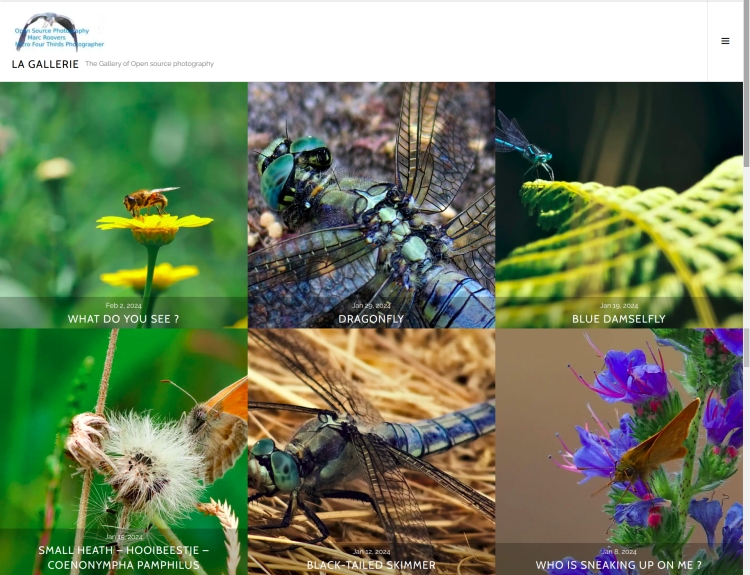
The photo gallery of Open Source Photography, Olympus micro 4/3 system, Vintage Lens Photograpy, Film Simulation, PictureFX, HDR – Photographer : Marc R.
Discover more from Open Source Photography
Subscribe to get the latest posts sent to your email.


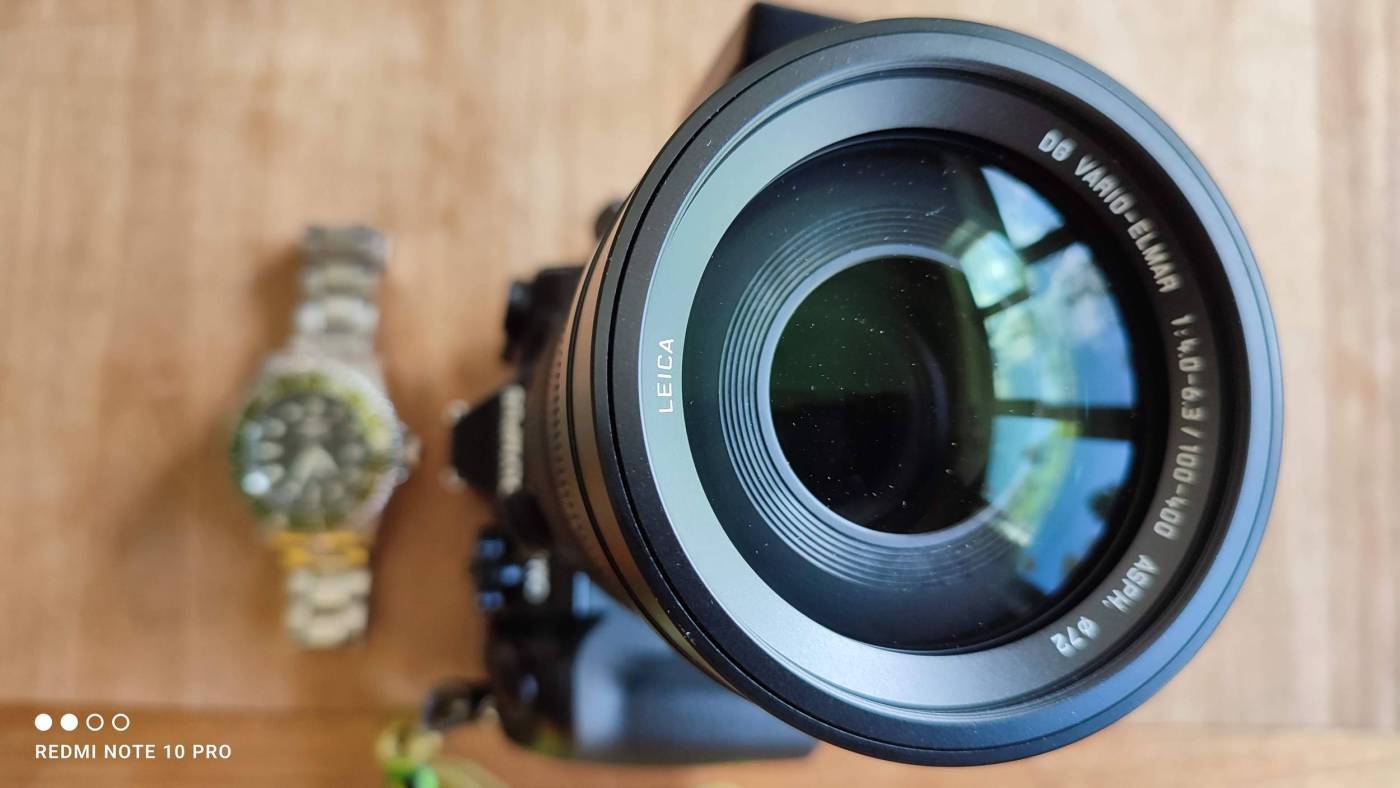

Veel experimenteren! Het ligt weer mooi vast.
LikeLiked by 1 person
Thanks Joke !
LikeLiked by 1 person
That sounds like a formidable setup! I’m happy with my 50-230mm for birding, but I do have access to a Fuji XF100-400 but that beast is way too big and heavy!
LikeLiked by 1 person
Hey Mark ! how are you ? is everything ok ? Yes, I’m very happy with my Oly setup. The 50-230mm is indeed a great lens, I bought it to after your recommendation, and I liked it very much.
LikeLike
Interessante weetjes Marc..
in RAW heb ik het zelf nog niet geprobeerd
prettige dag
LikeLiked by 1 person
Bedankt Willy, Ik fotografeer altijd jpg en raw, is de jpg niet helemaal naar wens, dan kan ik de raw beter bewerken zonder teveel kwaliteitsverlies – het nadeel is dat je veel meer megabytes moet opslaan. Ook nog een fijne dag Willy !
LikeLike